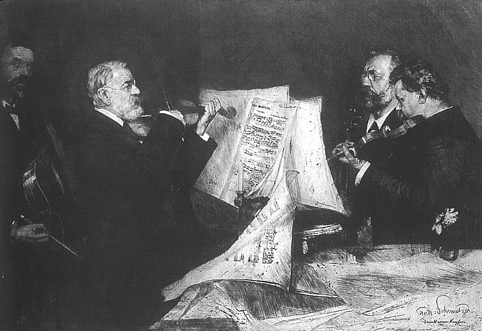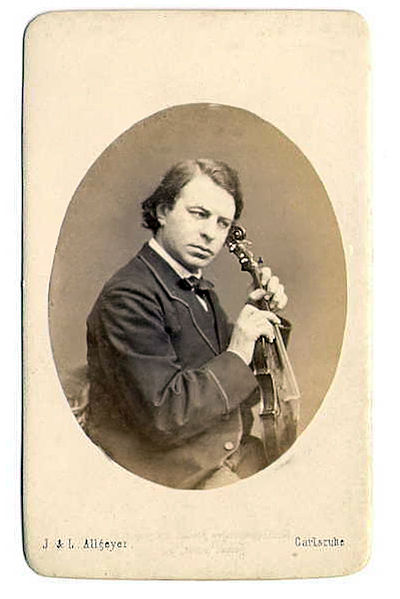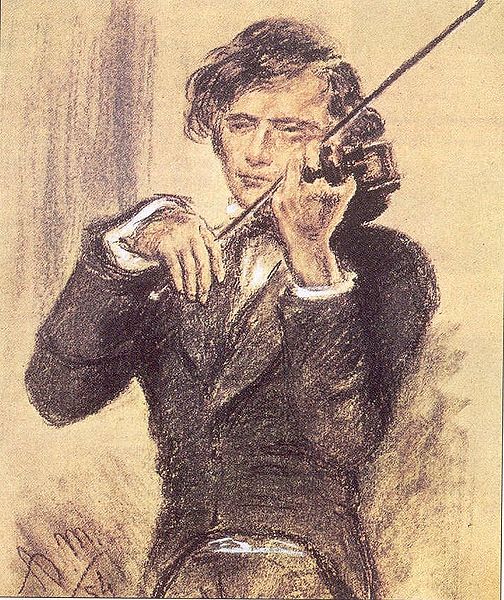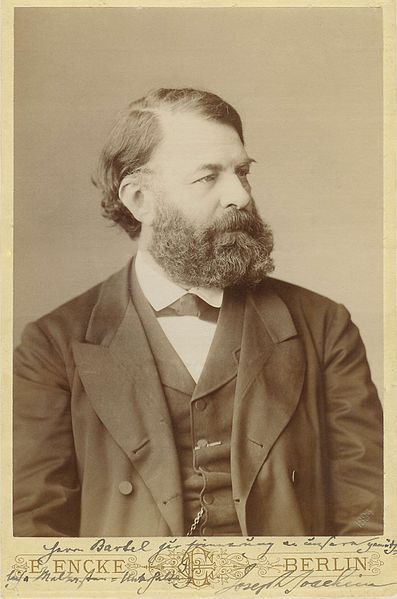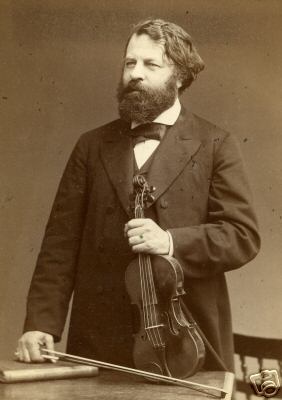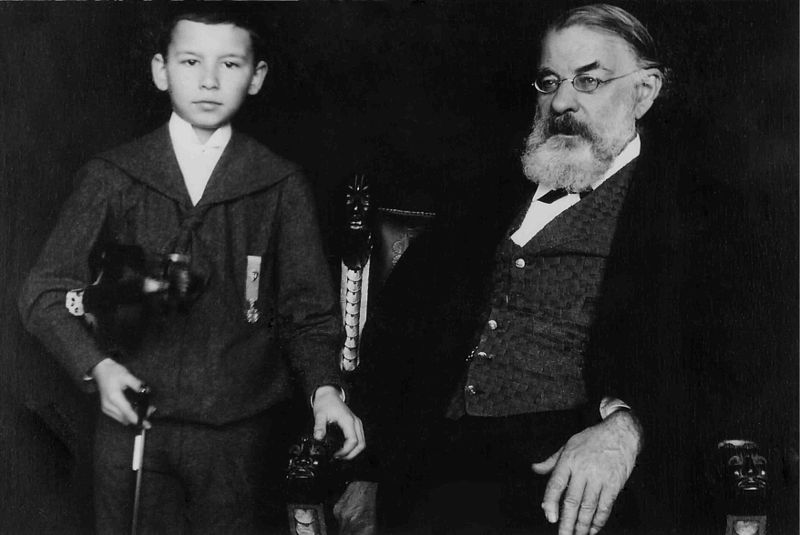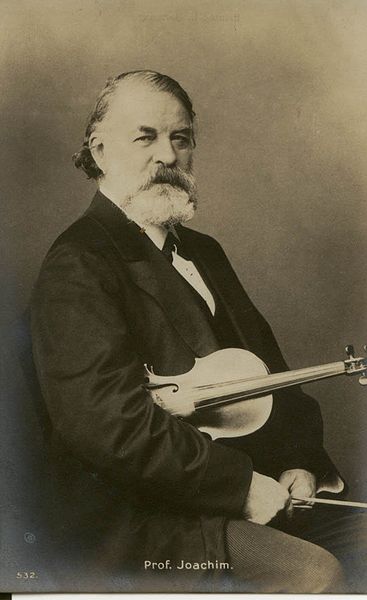<Back to Index>
- Physicist Maria Goeppert - Mayer, 1906
- Composer Joseph Joachim, 1831
- 33rd President of the Republic of Brazil Itamar Augusto Cautiero Franco, 1930
PAGE SPONSOR
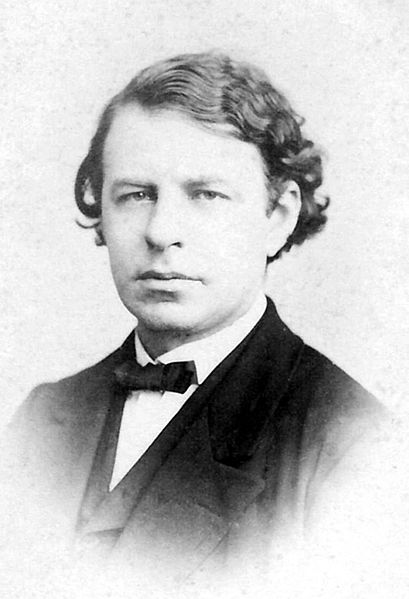
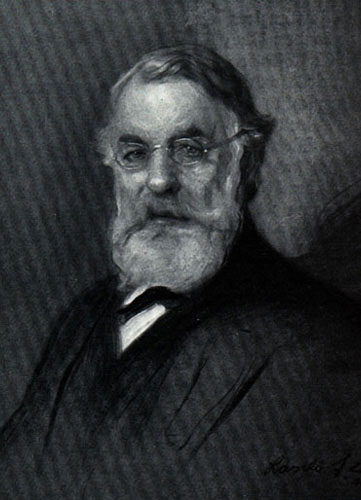
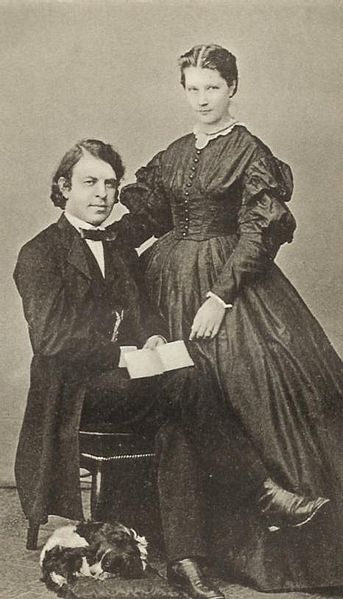
Joseph Joachim (June 28, 1831 – August 15, 1907) was a Hungarian violinist, conductor, composer and teacher. A close collaborator of Johannes Brahms, he is widely regarded as one of the most significant violinists of the 19th century.
Joseph Joachim was born in Kittsee (Kopčany / Köpcsény), near Bratislava and Eisenstadt, in today's Burgenland area of Austria. He was the seventh of eight children born to Julius, a wool merchant, and Fanny Joachim who were of Hungarian Jewish origin. His infancy was spent as a member of the Kittsee Kehilla (Jewish community), one of Hungary's prominent Siebengemeinden ('Seven Communities') under the protectorate of the Esterházy family. He was a first cousin of Fanny Wittgenstein, the mother of Karl Wittgenstein and the grandmother of the philosopher Ludwig Wittgenstein and the pianist Paul Wittgenstein.
In 1833 his family moved to Pest, where he studied violin with Stanislaus Serwaczynski, the concertmaster of the opera in Pest. (Serwaczynski later moved to Lublin, Poland, where he taught Wieniawski). In 1839, Joachim continued his studies at the Vienna Conservatory (briefly with Miska Hauser and Georg Hellmesberger, Sr.; finally — and most significantly — with Joseph Böhm). He was taken by his cousin, Fanny Wittgenstein to live and study in Leipzig, where he became a protégé of Felix Mendelssohn. In his début performance in the Leipzig Gewandhaus he played the Otello Fantasy by Heinrich Wilhelm Ernst. The twelve year old Joachim's 1844 performance of Beethoven's Violin Concerto in London (under Mendelssohn's baton) was a triumph, and helped to establish that work in the repertory. Joachim remained a favorite with the English public for the rest of his career.
Following Mendelssohn's death in 1847, Joachim stayed briefly in Leipzig, teaching at the Conservatorium and playing on the first desk of the Gewandhaus Orchestra with Ferdinand David. In 1848, Franz Liszt took up residence in Weimar, determined to re-establish the town's reputation as the Athens of Germany. There, he gathered a circle of young avant - garde disciples, vocally opposed to the conservatism of the Leipzig circle. Joachim was amongst the first of these. He served Liszt as concertmaster, and for several years enthusiastically embraced the new "psychological music," as he called it. In 1852 he moved to Hanover, at the same time dissociating himself from the musical ideals of the 'New German School' (Liszt, Richard Wagner, Hector Berlioz, and their followers, as defined by journalist Franz Brendel) and instead making common cause with Robert Schumann, Clara Schumann and Johannes Brahms. His break with Liszt became final in August 1857, when Joachim wrote to his former mentor: "I am completely out of sympathy with your music; it contradicts everything which from early youth I have taken as mental nourishment from the spirit of our great masters."
Joachim's time in Hanover was his most prolific period of composition. During this time, he frequently performed with Clara Schumann and with Brahms, both in private and in public. In 1860 Brahms and Joachim jointly wrote a manifesto against the "progressive" music of the 'New German' School, in reaction to the polemics of Brendel's Neue Zeitschrift für Musik. This manifesto met with a mixed reception, being heavily derided by followers of Wagner.
On May 10, 1863 Joachim married the contralto Amalie Schneeweiss (stage name: Amalie Weiss) (1839 – 99). Amalie gave up her own promising career as an opera singer and gave birth to six children. She did continue to perform in oratorios and to give lieder recitals. In 1865 Joachim quit the service of the King of Hanover in protest, when the Intendant of the Opera refused to advance one of the orchestral players (Jakob Grün) because of the latter's Jewish birth. In 1866, Joachim moved to Berlin, where he was invited to help found a new department of the Royal Academy of Music. There he became the director of the Hochschule für ausübende Tonkunst, or High School for Musical Execution.
On Good Friday, April 10, 1868, Joachim and his wife joined their friend, Johannes Brahms, in the celebration of one of Brahms' greatest triumphs, the first complete performance of his German Requiem at the Bremen Cathedral. Amalie Joachim sang "I Know that My Redeemer Liveth" and Joseph Joachim played Schumann's Abendlied. It was a glorious occasion, after which about 100 of the composer's friends, the Joachims, Clara Schumann, the Dietrichs, Max Bruch and others gathered at the Bremen Rathskeller.
In 1869, the Joachim String Quartet, was formed, which quickly gained a reputation as Europe's finest. Other members of the Quartet were Karel Halíř (2nd violin), Emanuel Wirth (viola) and Robert Hausmann (cello).
In 1884, Joachim and his wife separated after he became convinced that she was having an affair with the publisher Fritz Simrock. Brahms, certain that Joachim's suspicions were groundless, wrote a sympathetic letter to Amalie, which she later produced as evidence in Joachim's divorce proceeding against her. This led to a cooling of Brahms and Joachim's friendship, which was not restored until some years later, when Brahms composed the Double Concerto in A minor for violin and cello, Op. 102, as a peace offering to his old friend.
On
April 16, 1889, in England, Joseph Joachim was presented a Stradivarius
violin and Tourte bow once owned by Raphael Georg Kiesewetter. In late
1895 both Brahms and Joachim were present at the opening of the new
Tonhalle at Zurich, Switzerland; Brahms conducted and Joachim was
assistant conductor. But in April, two years later, Joachim was to lose
forever this revered friend, as Johannes Brahms died at the age of 64
at Vienna. At Meiningen, in December 1899, it was Joachim who made the
speech when a statue to Brahms was unveiled. During 1899, Joachim was invited to become president of the newly established Oxford & Cambridge Musical Club in London. He remained club president until his death. In
Berlin on August 17, 1903, Joachim recorded five sides for The
Gramophone & Typewriter Ltd (G&T), which remain a fascinating
and valuable source of information about 19th century styles of violin
playing. He is the earliest violinist of distinction known to have
recorded, only to be followed soon thereafter when Sarasate made some recordings the following year. Joachim's portrait was twice painted by Philip de László. A portrait of Joachim was painted by John Singer Sargent and
presented to him at the 1904 "Diamond Jubilee" celebration of his
sixtieth anniversary of his first appearance in London. In Berlin, a
great concert took place, at which his pupils past and present, 116
violinists and violists, with 24 cellists who attended his classes
played under the direction of Fritz Steinbach,
a conductor of note, for his interpretations of Brahms' music. The
great moment of celebration came when Joachim, without the slightest
hesitation, responded to the spontaneous request to play Beethoven's Violin Concerto in D major. Joachim remained in Berlin until his death in 1907. Among the most notable of Joachim's achievements were the revivals of Bach's Sonatas and partitas for solo violin, BWV 1001 - 1006, and particularly of Beethoven's Violin Concerto in D major, Op. 61. Joachim was among the first to play Mendelssohn's Violin Concerto in E minor, which he studied with the composer. Joachim played a pivotal role in the career of Brahms,
and remained a tireless advocate of Brahms's compositions through all
the vicissitudes of their friendship. He conducted the English premiere of Brahms's Symphony No. 1 in C minor. A number of Joachim's composer colleagues, including Schumann, Brahms, Bruch, and Dvořák composed
concerti with Joachim in mind, many of which entered the standard
repertory. Nevertheless, Joachim's solo repertoire remained relatively
restricted. Despite his close friendship with Brahms, Joachim performed
his Violin Concerto in D major only six times in his career. He never performed Schumann's Violin Concerto in D minor, which Schumann wrote especially for him, or Dvořák's Violin Concerto in A minor. The most unusual work written for Joachim was the F-A-E Sonata, a collaboration between Schumann, Brahms, and Albert Dietrich, based upon the initials of Joachim's motto, Frei aber Einsam (free but lonely). Although the sonata is rarely performed in its entirety, the third movement, the Scherzo in C minor, composed by Brahms, is still frequently played today.
Joachim's
own compositions are less well known. He has a reputation as a composer
of a short but distinguished catalogue of works. Among his compositions
are various works for the violin (including three concerti) and overtures to Shakespeare's Hamlet and Henry IV. He also wrote cadenzas for
a number of other composers' concerti (including the Beethoven and
Brahms concerti). His most highly regarded composition is his Hungarian concerto (Violin Concerto No 2 in D minor, Op. 11).
